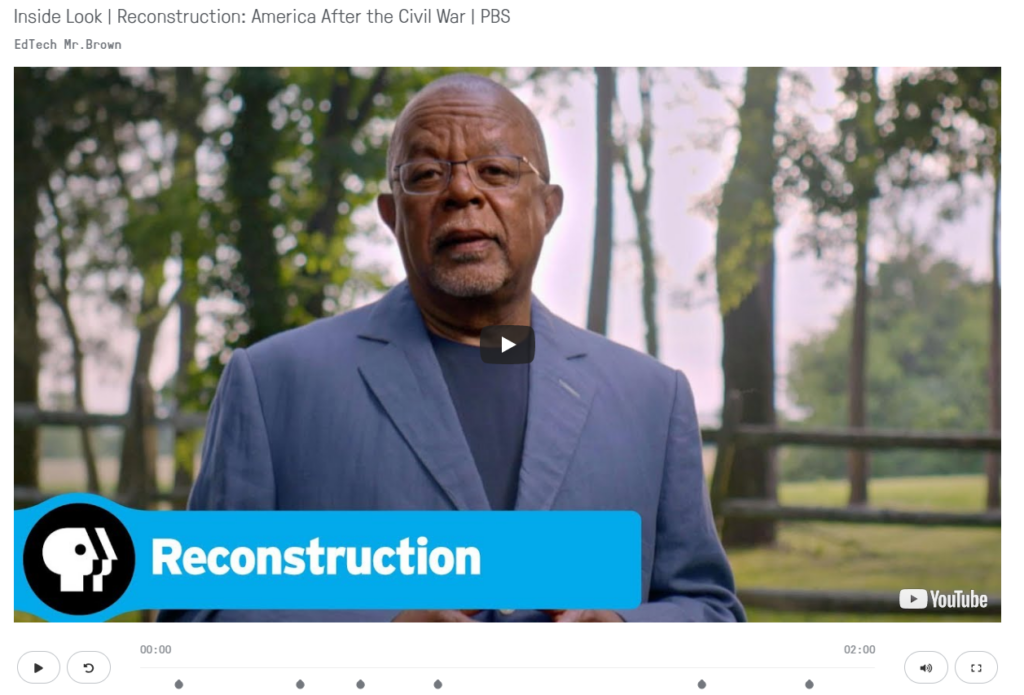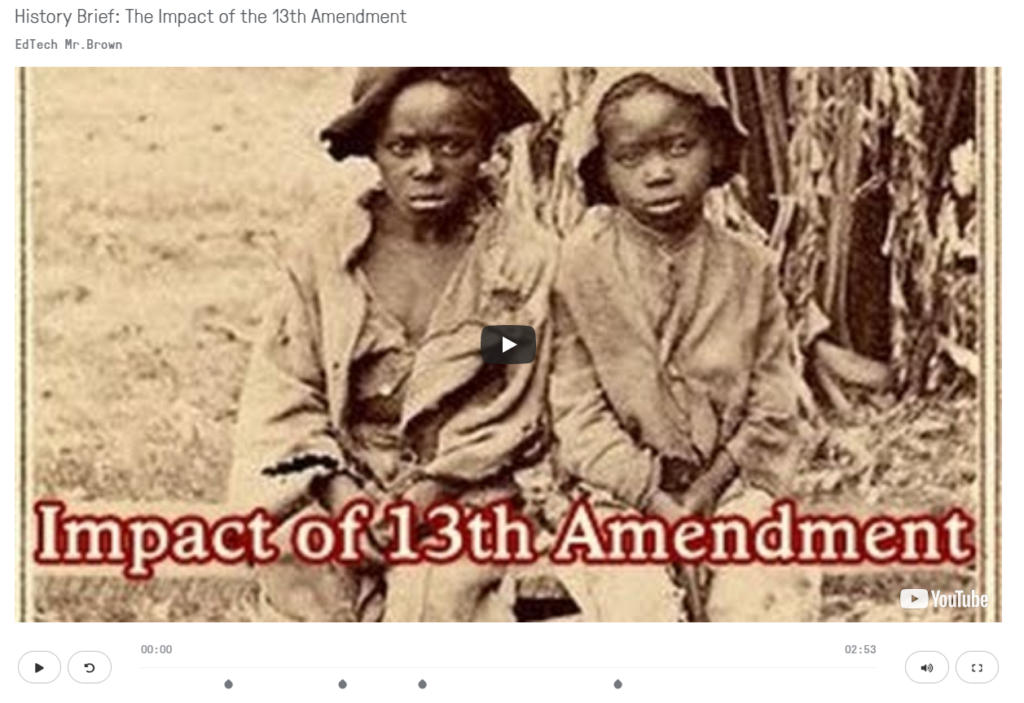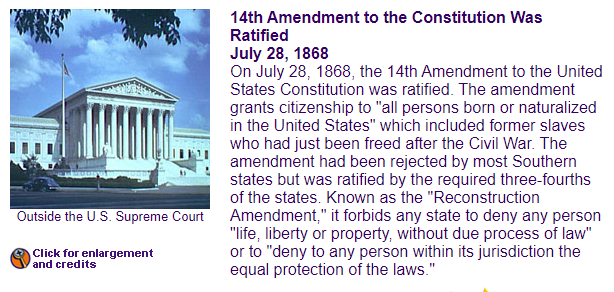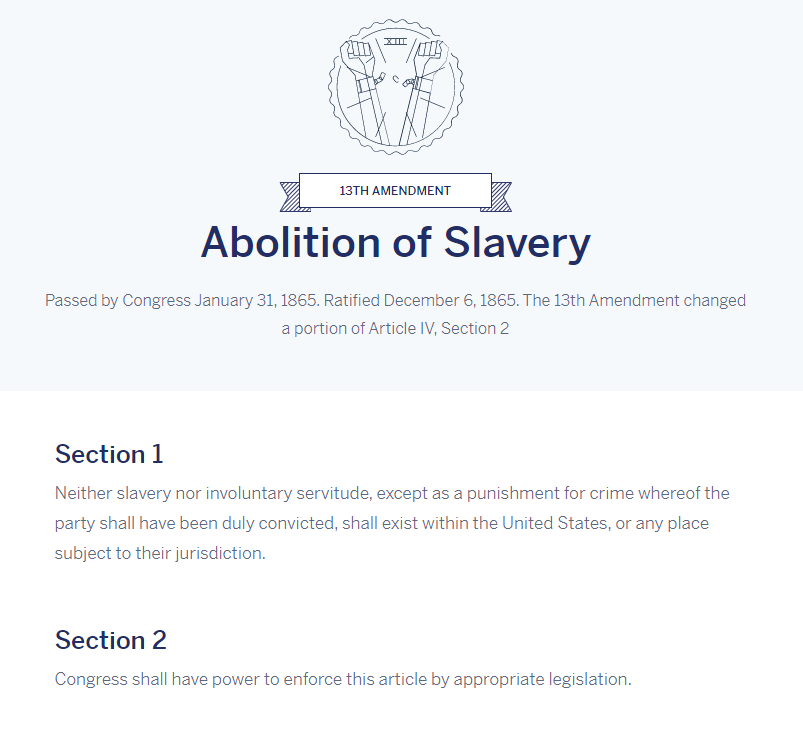Reconstruction Amendments

Download the teacher resources for this activity. These are the assignment files that you will need to save a copy of and assign in Google Classroom for your students to complete. These files include detailed Teacher Directions.
Student Directions:
Scroll through the information below. As you go read the text, watch , the videos, and examine the resources. Complete the assignments for each section which you will find in Google Classroom.
Reconstruction
Activity 1 :
Complete the Reconstruction EdPuzzle Activity Below.

Activity 2:
Read the article excerpt below, about Reconstruction in Texas, and answer the questions that follow on the Google Form Activity in your Google Classroom.
Reconstruction
“The Eleventh Texas Legislature met on August 6, 1866, and Throckmorton took office six days later. The governor’s efforts at securing recognition were hindered by the many former secessionists who dominated the legislature. These men selected two prominent secessionists, O. M. Roberts and David G. Burnet, for seats in the United States Senate. The legislature’s actions attempted to return the state as much as possible to the status quo ante bellum. They refused to ratify the Thirteenth and Fourteenth amendments. The members also enacted “black codes,” a series of measures designed to regulate black labor through apprenticeship, contract labor, and vagrancy laws. These labor laws appeared to Unionists in Texas and Republicans in the North to be an attempt to establish a new form of slavery. Such activity convinced even those Unionists who had not remained outside the conservative coalition that the former Confederates were back in control and unrepentant. It raised similar doubts in the minds of the local military commanders, the assistant commissioner of the Freedmen’s Bureau, and the members of Congress. Neither the senators chosen by the legislature nor the congressmen elected by Texas voters were allowed to take their seats in Washington. Throckmorton himself increased tension by his complaints against the army for interfering in civil affairs and in his efforts to protect the frontier from Indian raids by fielding ranging companies. Throckmorton believed that the army and the Freedmen’s Bureau meddled unreasonably in civil affairs and that the army was not doing its duty on the frontier. In turn, military officials and Unionists believed that Throckmorton, relying on local justice, had brought about a situation in which die-hard Confederates persecuted and even murdered blacks and Unionists without punishment. They also feared that the governor’s rangers were intended as a political organization to block Reconstruction as much as to fight Indians.”

James W Throckmorton – 12th Governor of Texas served from 1866 to 1867 during the beginning of Reconstruction
Mathew Brady – Library of Congress Prints and Photographs Division. Brady-Handy Photograph Collection. http://hdl.loc.gov/loc.pnp/cwpbh.04217. CALL NUMBER: LC-BH832- 297 <P&P>[P&P]
Status Quo – The existing state of affairs, the way things normally were
Antebellum – Occurring or existing before the American Civil War
Unionists – People loyal to the United States, the Union
13th Amendment
Activity 3:
Follow the link below to visit the Constitution Center website about the 13th Amendment. Complete the Google Docs assignment in Google Classroom about the 13th Amendment.
https://constitutioncenter.org/interactive-constitution/amendment/amendment-xiii
Activity 4:
Complete the 13th Amendment EdPuzzle activity below.

Amendment 14
Activity 5:
Follow the link below to learn about the 14th Amendment from the America’s Library Website. Complete the Google Forms Activity in Google Classroom about the 14th Amendment.
http://www.americaslibrary.gov/jb/recon/jb_recon_revised_1.html

Amendment 15
Read the information below then watch the YouTube video that follows.
The 15th amendment was passed by Congress on 26 February 1869. Nearly a year later the required 3/4 of states had ratified the amendment so that it could go into effect. The 15th Amendment guarantees the rights of U.S. Citizens to vote. Despite the ratification of the 15th amendment many southern states attempted to stop Black Americans from voting by charging a fee to vote (Poll Tax) which they knew most black Americans could not afford. Some governments required Black Americans to pass difficult Literacy Tests that were designed to make them fail. Voter intimidation was also deployed in which Black Americans were threatened or violently attacked if they showed up at polling locations.
Activity 6:
Read and answer the reflective essay question in Google Classroom about the progression of 15th amendment rights.
Quick Quiz

Activity 7:
Complete the quick quiz in Google Classroom to prove that you understand the 13th, 14th, and 15th Amendment.
